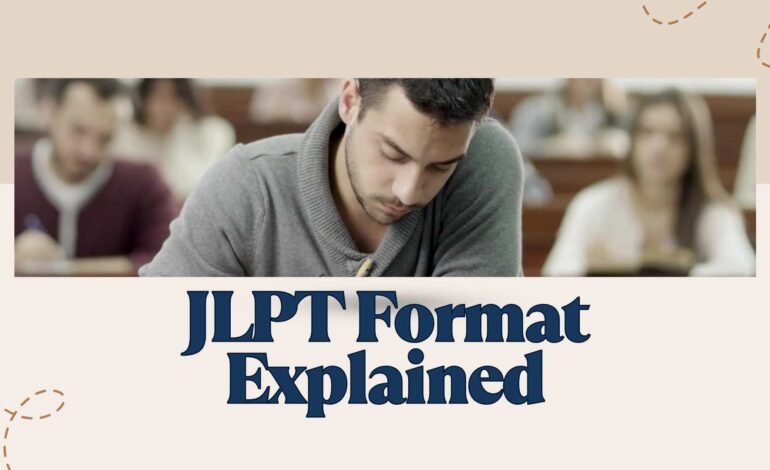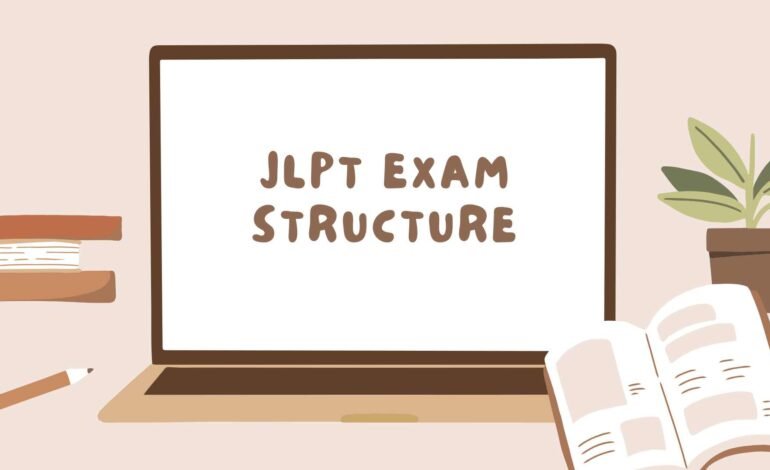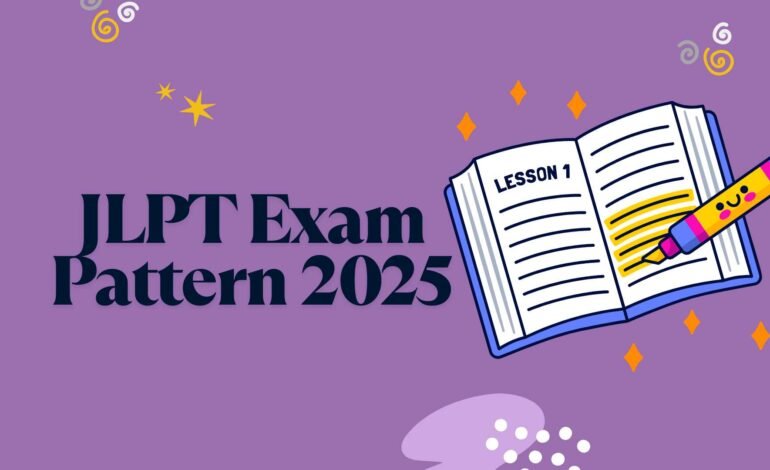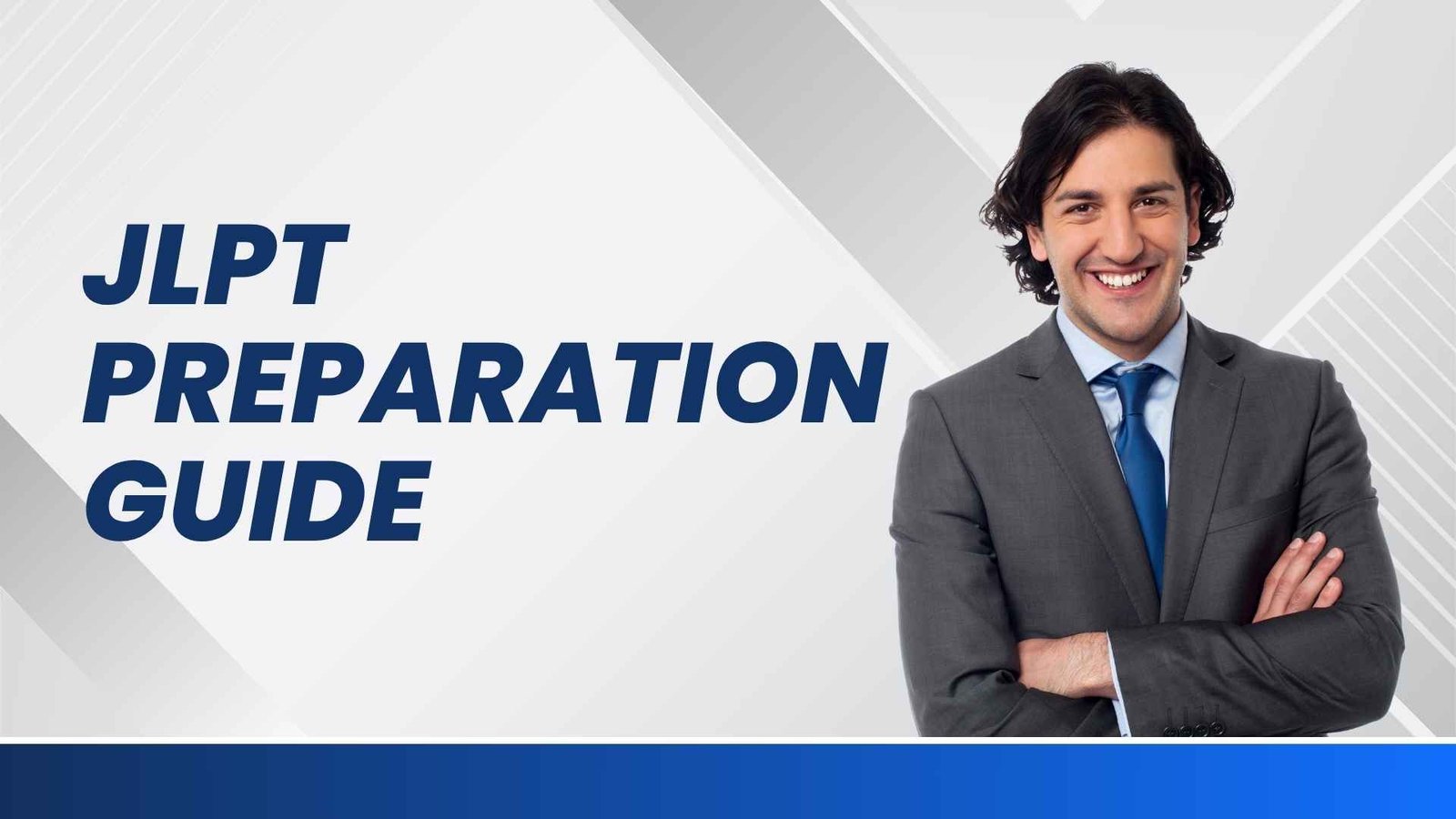If you’re preparing for the Japanese-Language Proficiency Test, understanding the JLPT format is your first step toward a high score. Whether you’re a complete beginner or brushing up for the advanced levels, the exam follows a fixed structure that remains consistent across all levels—from N5 to N1.
This article breaks down the JLPT format in detail, covering how the exam is structured, how the sections flow, the different levels, and how scoring works. Let’s dive in and make your preparation smarter and more strategic.
For official details on each section of the JLPT, visit the JLPT Test Sections Overview.
What Is the JLPT?
The Japanese-Language Proficiency Test (JLPT) is the most widely recognized and respected exam for non-native speakers of Japanese. It is jointly conducted by the Japan Foundation and JEES (Japan Educational Exchanges and Services) and is held twice a year—typically in July and December—across various countries, including India, Japan, the United States, and many parts of Europe.
The JLPT measures your ability to understand and use Japanese in real-life scenarios. It is divided into five levels, ranging from beginner to advanced:
- N5 – Basic understanding of common expressions, simple phrases, and elementary kanji
- N4 – Familiarity with basic grammar and the ability to understand daily conversations
- N3 – Intermediate comprehension of written content, media, and spoken Japanese
- N2 – Strong command of formal and professional language used in news, work, and discussions
- N1 – Near-native fluency, with the ability to grasp academic writing, editorials, and complex debates
Before choosing the right level for your goals, it’s important to first understand the JLPT format—how the exam is structured, what it tests, and how scoring works. A solid grasp of the format ensures smarter preparation and better results.
Ready to explore all JLPT offerings? Visit central JLPT page at TLS – JLPT Courses & Resources.
JLPT Format: Core Exam Structure
The JLPT format follows a consistent structure across all five levels—N5 to N1—though the difficulty and complexity increase as you advance.
Each level of the JLPT is divided into three main sections:
- Language Knowledge (Vocabulary + Grammar)
- Reading
- Listening
One unique aspect of the JLPT format is that it contains no speaking or writing components. Instead, the entire test is multiple-choice and paper-based, which allows for objective scoring and focused preparation.
This standardized format helps learners at any level use targeted study materials, practice with mock exams, and build confidence by mastering the exact exam structure in advance. Whether you’re aiming for N5 or preparing for N1, understanding this format is the foundation of effective JLPT preparation.
Curious about how the test is organized? Explore the full JLPT Exam Structure here.
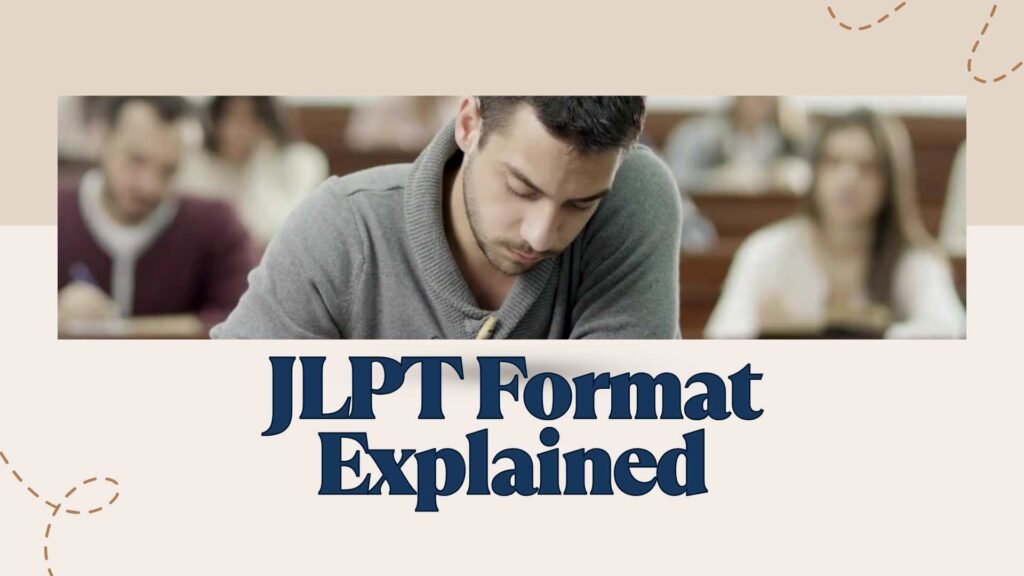
Time Allotment by Level
Understanding the JLPT format also means being aware of how much time you’ll get at each level. As the levels progress from N5 to N1, the test becomes longer and more cognitively demanding, especially in reading and listening sections.
Here’s a breakdown of the JLPT format time allocation by level:
- N5 – 105 minutes
- N4 – 125 minutes
- N3 – 110 minutes
- N2 – 155 minutes
- N1 – 170 minutes
As you can see, the JLPT format at higher levels like N2 and N1 includes longer reading passages, more advanced vocabulary, and fast-paced listening sections that mirror real-life Japanese usage in professional and academic settings.
Proper time management and practicing with level-specific mock exams are essential to handling the pacing and pressure of the JLPT format, especially at advanced stages.
Need a clear breakdown of each test section? Check out our comprehensive JLPT Exam Format guide.
Types of Questions in JLPT Format
The JLPT format is designed to evaluate how well you can use Japanese in real-world situations. While the test remains multiple-choice and paper-based, the types of questions vary in complexity across levels—from basic word recognition to abstract reading comprehension and fast-paced listening.
Here’s how question types are structured in the JLPT format:
Looking for a detailed breakdown of the test structure? Visit our guide on the JLPT Test Format.
Vocabulary
- Identify correct meanings of words
- Read and understand kanji in context
- Choose the right word to complete a sentence
Grammar
- Complete sentences using appropriate grammar
- Reorder phrases to form grammatically correct sentences
- Identify errors or best grammar usage in a sentence
Reading
- Answer comprehension questions from short texts (N5–N4) to long-form essays and editorials (N2–N1)
- Interpret content from advertisements, instructions, newspaper excerpts, and blog posts
- Analyze the writer’s tone, intent, and implied meaning
Listening
- Understand dialogues from daily life, announcements, and workplace scenarios
- Listen to news clips, interviews, monologues, or group conversations
- Choose answers based on tone, implication, or detailed understanding
As you progress to higher levels, the JLPT format introduces:
- Abstract and nuanced content
- Inference-based questions
- Faster, more natural Japanese in the listening section
This evolution ensures the exam mirrors real-world communication—from reading a train schedule at N5 to understanding an academic discussion at N1.
Get everything you need to know with our full JLPT 2025 Guide.
JLPT Format: Scoring System
The JLPT format uses a scaled scoring system. Each test is graded out of a total of 180 points, split across the three sections.
Here’s how it typically breaks down:
| Section | Max Points |
| Language Knowledge | 60 |
| Reading | 60 |
| Listening | 60 |
To pass, you must meet:
- A minimum overall score
- A sectional passing score in each area
Failing even one section means you don’t pass, regardless of your total score. This is a key aspect of the JLPT format that many test-takers overlook.
Enhance your comprehension—check out our detailed JLPT Reading & Listening Sections guide.
Why Understanding the JLPT Format Matters
Knowing the JLPT format helps you:
- Create an effective, section-wise study plan
- Avoid surprises on test day
- Manage time smartly across sections
- Focus on improving your weaker skills
- Practice using official-style mock exams
Once you’re familiar with the JLPT format, your test anxiety drops, your strategy becomes clearer, and your chances of passing improve dramatically.
On the hunt for top tips? Discover how to Pass JLPT in Your First Attempt.
❓ FAQs – JLPT Format
Q1. Is the JLPT format the same for every level?
Yes, the JLPT format is consistent in structure (Language Knowledge, Reading, Listening), but the content difficulty and time duration vary by level.
Q2. Does the JLPT include speaking or writing?
No. The JLPT only includes multiple-choice questions for reading, vocabulary, grammar, and listening. There are no speaking or writing sections.
Q3. How often is the JLPT held?
The test is usually held twice a year, in July and December, in Japan and other countries.
Q4. Can I skip levels in the JLPT?
Absolutely. You can directly apply for any level of your choice, whether it’s N5 or N1, based on your proficiency and preparation.
Q5. How can I practice the JLPT format effectively?
Use official JLPT sample questions, time yourself based on level-specific durations, and take mock tests to simulate the actual format.
📝 Final Thoughts
Mastering the JLPT format is just as important as learning Japanese vocabulary or grammar. The more familiar you are with the flow of the exam, the more confident and prepared you’ll be.
So whether you’re starting at N5 or aiming for the elite N1, make sure your study plan includes time to understand the JLPT format thoroughly. It’s the foundation of your test-day success.

